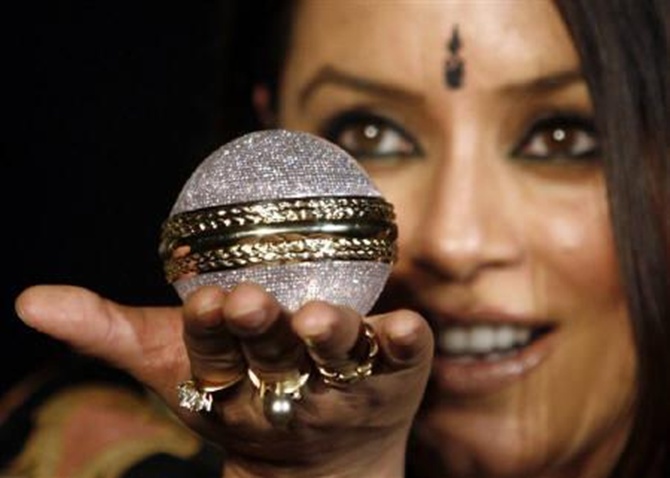Diamond prices vary purely on demand and supply.
You can make extraordinary returns within six months or it can even take years.
Tinesh Bhasin reports.

The Indian Commodity Exchange (ICEX) went live with derivatives of diamonds.
The best part about the world's first diamond futures contracts is that even retail investors can participate in the trading and buy diamonds using a systematic investment plan (SIP).
"Many individuals are interested to invest systematically every month and then take delivery of the precious stone when they reach the goal. As the futures trade is live, brokers can now offer the service to their clients," says Sanjit Prasad, managing director and chief executive officer, ICEX.
While diamonds help to diversify the portfolio, it is an alternative investment class.
It should be restricted to only 1 to 2 per cent of the portfolio, according to industry experts.
"While a diamond is a good source to store wealth as you don't see huge erosion in it, individuals should not buy it for the purpose of trading. Buy a diamond if you want to consume it and to use as a source to store wealth," says Jignesh Mehta, MD, Divine Solitaires.
Mehta points out that diamond prices vary purely on demand and supply. You can make extraordinary returns within six months or it can even take years.
One should, therefore, not look at it as a pure financial product.
In the past three years, returns from diamonds have been negative. On a five-year basis, the prices are flat.
The market for diamonds had been getting organised slowly and becoming more transparent.
Earlier, when an individual wanted to liquidate diamonds, each jeweller quoted a price based on the demand from his own clients.
"Now, we have platforms where industry consortiums provide prices. You can get a quote by reading out the quality specified on the certificate. If we feel there's demand for a particular quality, we would buy the diamond," says Rajiv Popley, MD, Popley and Sons.
Investors can also check the prices on the Internet, based on different features of the stone and take a more informed call.
Popley says ICEX's diamond futures contract is good for buyers and investors as it will bring further transparency in price.
On the ICEX, three contracts are available: One carat (one carat comprises of 100 cents), 50 cents and 30 cents of HVS2 quality, which is one of the largest-traded quality of diamonds.
The H in HVS2 stands for colour while SV2 stands for the clarity of the stone.
The lot size of each contract will be one cent or one-hundredth of a carat.
Assuming that a one-carat diamond costs Rs 2.5 lakh, the lot size will be valued at Rs 2,500.
Since futures trading involves putting up a margin of around five per cent, an investor can take exposure by putting up just Rs 125, on the basis of the assumed cost.
Those who want to save systematically to buy a diamond can take multiple contracts of one cent and accumulate them.
If you accumulate 30 contracts, you can opt to take a 30 cent diamond, 50 contracts for 50 cents and 100 contracts for a one-carat stone.
While the quality of diamonds on the ICEX is the most traded one and easily liquidated, Popley says for pure investment purpose, one should look at rare diamonds that are upwards of one carat, starting at Rs 2.5 lakh.
"An investor is likely to get better returns for the rarity of diamond," he says.